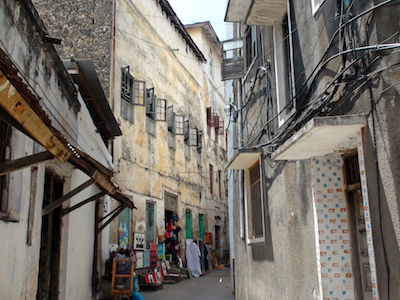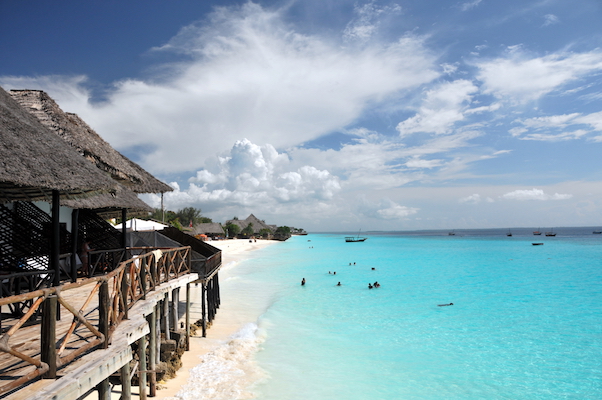The name Zanzibar probably derives from the Arabic “Zayn za `l bar”, meaning “the island is beautiful”. And indeed, Zanzibar is a traveller’s paradise!
Zanzibar is officially part of Tanzania, but life here is different in many aspects – culture, food, politics, religion. The Zanzibar archipelago is a semi-autonomous part of Tanzania and is located about 30 kilometres off the coast of East Africa. On the main island Unguja and the northern island Pemba live about 1.1 million people.
The island is about half the size of the Spanish island of Mallorca. It was once a sultanate and in the 19th century and an important trading centre for slaves and ivory. Zanzibar was also the gateway for explorers to the hinterland of East and Central Africa. And then the spices: In the 19th century, around 90 percent of all carnations traded worldwide came from the island.

Street in Stone Town in Zanzibar, Tanzania. The town has been included in UNESCO’s World Heritage Sites in 2000. (Source: Depositphotos)
Those who spend their holidays in Zanzibar usually end up in Stone Town – and the city is truly worth a visit. Stone Town is the capital of Zanzibar and used to be a real melting pot in earlier centuries. Arabic, African, Indian, and through the colonial period, also Western influences result in a unique exotic potpourri.
The name Stone Town comes from the time when Arabs built houses from coral stones. Also, colonial buildings, such as the so-called “House of Wonders”, are impressive. Built in 1883 as a ceremony palace for the then Sultan of Oman, the architecture is really eye-catching. But what made him so famous at that time was that he was the first building in East Africa to have electricity and an elevator.
Besides, the museum palace, the former residence of the Sultans, the Arabic fort of Forodhani Gardens at the harbour promenade as well as the Anglican church at the Daradjani market are worth a visit. The church recalls a dark chapter in Zanzibar’s history: it stands on the site of the former central slave market. In the adjacent hospital, the dungeons can still be visited today. The slave trade was only stopped in 1871.
And of course, the labyrinth of alleys in Stone Town itself is a must-see and has been a UNESCO World Heritage Site since 2000. Here you can find the famous Swahili doors with their rich carvings, finely decorated balconies, shops with silver jewellery, heavy Zanzibar chests and colourful Kanga cloths.
Just outside the city are the palace ruins of Mtoni and the Jozani Forest. In Zanzibar’s last preserved primeval forest, visitors may be lucky enough to see rare red stumpy monkeys. Tip: If you are on your own, it is best to rent a scooter in Stone Town.
Above all, a spice tour is a must. Pepper, cloves, cardamom, and nutmeg once made the island famous.
White sandy beach, turquoise blue sea, the rustling of palm leaves in the wind – why travel to the Caribbean when you can land in Zanzibar in only 11 hours flight time? The crystal clear water above coral reefs invites you to snorkel and dive. Kitesurfers and surfers will also get their money’s worth and on the east coast ebb and flow allow an extensive walk on the seabed – including starfish, urchins and sand crabs.
A tideless beach holiday is possible in the north of the island. The tourist hotspot Nungwi offers a lot of action, but also peace and seclusion. Here you cand find for every travel budget the right accommodation from luxury resort to backpacker hostel.

(Source: Depositphotos)
Zanzibar has a tropical climate all year round, but the best travel time is the dry season in January and February as well as the months of June to October. Then the air temperature is between 25 and 30 degrees, the water temperature slightly lower. The months from March to June are particularly rainy, and there is also a shorter rainy season from September to November.
For your travel planning, keep in mind that during the Ramadan fasting month, many shops and restaurants are closed.